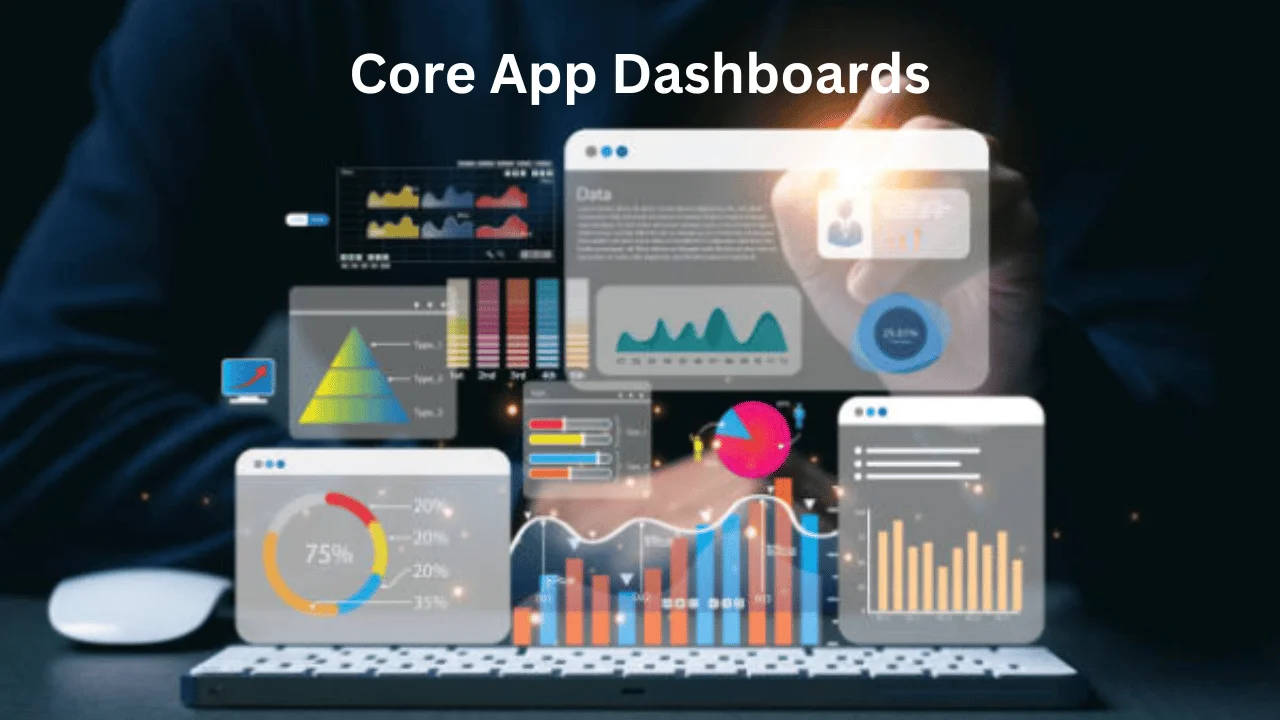A core app dashboards is a vital tool for monitoring and optimizing the performance of your application. It offers a clear view of critical metrics and operational insights, making it indispensable for both administrators and developers.
How to Design an Effective Core App Dashboard
Designing a core app dashboard requires a focus on clarity, utility, and user experience. Here’s how to create a dashboard that stands out:
Understand User Needs
Identify the key metrics that are most relevant to your users. This ensures the dashboard is not only functional but also user-centric.
Optimize Layout for Quick Insights
Arrange the panels or widgets in a way that the most important data is immediately visible. This helps users quickly grasp the overall health and performance of the application.
Integrate Interactive Elements
Use interactive charts and graphs to make the data more engaging. This allows users to delve deeper into the metrics that matter most to them.
Ensure Scalability and Flexibility
Make sure your dashboard can adapt to changing requirements and scales as your application grows. This means incorporating features like customizable views and dynamic data updates.
Best Practices for User Activity Monitoring
Monitoring user activity is crucial for understanding how your app is used and identifying areas for improvement.
Track Key User Actions
Identify and monitor the most important user actions to get a clear picture of user engagement and application effectiveness.
Visualize User Flows
Use diagrams or heat maps to visualize how users navigate through your app. This helps in optimizing user experience and interface design.
Set Alerts for Unusual Activities
Configure real-time alerts for any unusual user activities to quickly respond to potential issues or breaches.
Utilize Analytics for Deeper Insights
Leverage analytics tools to understand user behaviour patterns and refine your app based on these insights.
Improving Error Log Visualization
Effective error log management is key to maintaining application health and performance.
Centralize Error Logging
Consolidate all error logs in one place for easier monitoring and analysis.
Use Clear Visual Indicators
Employ colour coding and icons to make it easier to identify the severity and type of errors.
Implement Search and Filter Options
Allow users to filter and search through the error logs to quickly find the information they need.
Automate Error Resolution Processes
Integrate tools that can suggest or automate fixes for common errors, enhancing efficiency.
Integrating Real-Time Data into Dashboards
Real-time data integration is essential for timely decision-making.
Utilize Web Sockets for Live Updates
Implement Web Sockets to push updates to the dashboard without needing a page refresh.
Highlight Key Trends and Changes
Use dynamic charts to show how metrics evolve in real time, helping users spot trends quickly.
Ensure Data Accuracy and Timeliness
Regularly verify the sources of your real-time data to maintain its reliability and accuracy.
Customizing Dashboards for Different User Roles
Tailoring the dashboard experience based on user roles enhances usability and security.
Define Role-Based Access Controls
Ensure users see only the data and functions relevant to their roles.
Offer Personalized Widgets and Views
Allow users to customize their dashboard layouts according to their preferences and needs.
Maintain Consistency Across Roles
While customizing, keep the overall design and navigation consistent to avoid confusion.
Future Trends in Dashboard Technology
Stay ahead by understanding and implementing emerging trends in dashboard technology.
Leverage AI for Predictive Analytics
Incorporate AI to forecast future trends based on historical data, enhancing proactive decision-making.
Embrace Augmented Reality for Data Visualization
Explore AR to provide immersive ways of interacting with dashboard data.
Integrate Voice Commands for Accessibility
Add voice control features to make the dashboard more accessible and easier to use.
Challenges in Maintaining Up-to-Date Dashboards
Managing and updating a core app dashboard can be complex, but addressing these challenges is key to maintaining its effectiveness and relevance.
Handling Data Volume and Variety
As applications grow, the volume and variety of data can become overwhelming. Efficient data aggregation and filtering mechanisms are necessary to manage this influx and keep the dashboard responsive.
Ensuring Consistent Performance
With increasing data and user interaction, maintaining the dashboard’s performance is essential. Implementing caching and optimizing database queries can help in keeping the dashboard swift and efficient.
Updating with New Features and Technologies
Regularly integrating new features and adapting to emerging technologies can keep the dashboard modern and functional. This includes adding support for new data types and user interaction models.
Impact of Dashboard Design on Decision-Making
The design of a core app dashboard significantly affects how users interpret and use the data, influencing their decisions and actions.
Clarity and Simplicity
A clear and simple design helps users quickly understand the data and its implications without confusion. This promotes more informed and faster decision-making.
Consistency and Intuitiveness
Maintaining a consistent design across the dashboard ensures users don’t have to relearn how to navigate or interpret data, enhancing their ability to make quick, accurate decisions.
Adaptive and Responsive Design
Ensuring the dashboard is usable on various devices and screen sizes makes it accessible to all users, facilitating decision-making anytime and anywhere.
Must Visit: Ztec100.com: The Convergence of Technology, Health, and Security
Frequently Asked Questions
What is core app dashboards?
A core app dashboard is a centralized interface that displays key performance indicators and operational data of an application. It helps in monitoring, managing, and optimizing the app’s performance.
Why are real-time updates important for a dashboard?
Real-time updates provide the most current data, enabling quick responses to changes or issues within the application, thereby enhancing decision-making and operational efficiency.
How can customization improve dashboard usability?
Customization allows users to tailor the dashboard to their specific needs, making it easier to access the data they care about most and improving their overall experience and productivity.
What are the benefits of using interactive elements in dashboards?
Interactive elements like charts and graphs make data more engaging and easier to understand, allowing users to explore and analyze information in depth.
How does user activity monitoring contribute to app success?
By tracking how users interact with the application, developers and administrators can identify usage patterns, optimize workflows, and improve overall user experience and satisfaction.
Conclusion
A well-designed and maintained core app dashboard is a transformative tool in the digital landscape. It not only provides a comprehensive view of an application’s performance but also empowers users to make informed decisions swiftly. By addressing challenges in data management, maintaining performance, and ensuring a user-centric design, businesses can harness the full potential of their core app dashboards to drive operational efficiency and user satisfaction

Ruby Stauffer is a prominent technology blogger known for her insightful analysis and in-depth reviews of the latest tech trends and gadgets. Her blog has become a go-to resource for tech enthusiasts seeking reliable information and expert opinions on the ever-evolving world of technology.

